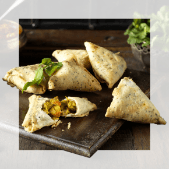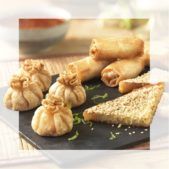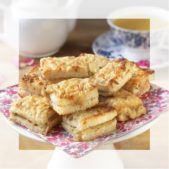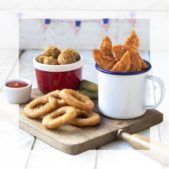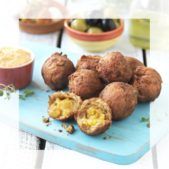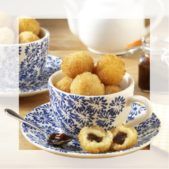Do you know that the Chinese New Year is celebrated for 23 days?
That certainly beats the one miserly day we get off on 1st January which is generally spent in bed catching up on sleep and recovering from the alcohol-induced hangover from the night before.
Our cousins north of the border do it right because they get the 2nd January off as a public holiday as well, so perhaps we should all move to Edinburgh!
Anyway, as Chinese food is one of our specialities here in the SK kitchen, we were not going to pass up the opportunity to make it our theme for the month, even if any mention of China at the moment immediately gets you thinking of a certain virus with a name associated with certain Mexican beer served with a slice of lime (you wouldn’t to be working in their PR department at the moment!)
We decided against dedicating a recipe to the animal sign of the Chinese zodiac which is being celebrated in 2020, given it’s the year of the rat. Aside from the fact people aren’t exactly clamouring for rat-based recipes, it’s even less appropriate when these rodents are traditionally associated with disease and well, you get our drift. Bottle of Corona anyone?
What we wanted to look at in his blog (yes get on with Chef Sean), is a certain type of Chinese food which has become increasingly popular in recent years, namely the Bao.
These are bread-like dumplings filled with meat, vegetables or sweet desserts and usually steamed.
In the UK, they originally became popular via street food venders but have now become mainstream and served in restaurants and sold in supermarkets across the UK.
Not surprisingly, London is where it’s at when it comes to the Bao though. Bao, a small chain of four restaurants in the nation’s capital which undoubtedly will soon branch our further, has become a cult destination and in January introduced 15 new flavours, including Jerk Chicken Bao, Philly Cheesesteak Bao, Banana Fritter Bao and even a Crisp Sandwich Bao!
Even Hellman’s got in on the act recently when they launched their new vegan mayo by including it in bao buns served from a pop-up food truck in London.
So, if you haven’t tried a Bao yet, see them out and thank us after.
For this week’s recipe, we’ve made a Chinese style bao bun and sticking to the far east for the filling.
Korean Chicken Bao Buns
Ingredients (for the buns):
- 450g plain flour
- 2 tbsp caster sugar
- ½ tsp salt
- 2 tsp instant dried yeast
- 3 tbsp whole milk
- 210m warm water
- 3 tbsp unsalted butter
- 1 tbsp olive oil
For the chicken and marinade:
- 4 chicken breasts sliced into cubes
- 240ml buttermilk
- 1/2 tsp salt
- 1/4 tsp white pepper
- 1/4 tsp garlic salt
For the coating:
- 180g plain flour
- 1 tsp salt
- 1 tsp ground black pepper
- 1/2 tsp garlic salt
- ½ tsp celery salt
- 1 tsp dried thyme
- 1 tsp paprika
- 1 tsp baking powder
- 1 tsp chilli flakes
- vegetable oil for deep frying at least 1 litre/four cups
For the sauce
- 2 tbsp gochujang paste
- 2 tbsp honey
- 4 tbsp brown sugar
- 4 tbsp soy sauce
- 2 cloves garlic peeled and minced
- 2 tsp minced ginger
- 1 tbsp vegetable oil
- 1 tbsp sesame oil
Method:
Start with the buns by placing the flour, sugar, salt and yeast in a bowl and mix together.
Add the milk, warm water and butter to a jug and stir together until the butter melts. Stir liquid into the flour mixture at first with a spoon, and then with your hands. Turn out onto a floured surface and knead for 5-10 minutes, or use a mixer.
Place the dough in an oiled bowl. Cover with clingfilm and leave to prove until doubled in size for at least 2 hours.
Whilst the dough is proving place the chicken in a bowl and dd the buttermilk, salt, pepper and garlic salt. Mix together, cover and place in the fridge to marinade for an hour.
Put the dough on a floured service and knead again, Split into small balls. Place a piece of baking parchment on your work surface and roll each ball into an oval on top of the parchment, using a rolling pin – approx. 6cm x 9cm.
Brush the ovals with the olive oil and fold each oval over, using a chopstick in the middle to fold over to leave a little space in the fold (so the oil is on the inside of the fold). Remove the chopstick and place each bun onto a small piece of baking parchment.
Place the buns on the trays and cover with clingfilm (but don’t let the film come into contact with the dough) and leave to prove for a further hour, until puffed up.
Preheat the oven to a low heat (to keep cooked chicken warm). Heat a large pan of vegetable oil (or until hot. Mix together the crispy coating ingredients in a small bowl. Take the chicken out of the fridge. Lift a piece from the buttermilk and allow the excess to drip off. Mix the chicken in the crispy coating mixture – ensuring it’s fully covered. Place on a tray and repeat until all of the chicken is coated.
Once the oil is hot enough, add in the chicken pieces in small batches. Cook for 3-5 minutes until golden brown and cooked in the middle.
Meanwhile, put a large steamer pan on to boil. Working in batches, place the buns in the steamer and steam for 10 minutes.
While the chicken and bao buns are cooking, make the sauce. Place the gochujang, honey, sugar, soy sauce, garlic, ginger, vegetable oil and sesame oil in a saucepan and stir together.
Bring to the boil, then simmer for 5 minutes until thickened.
Place all of the cooked chicken in a bowl and pour the sauce over the chicken. Toss together to coat.
Carefully open the steamed bao buns and stuff with the Korean chicken. Top with sliced red onion, cucumber and fresh coriander (all optional).
About Sean Flint
Development & Innovation Chef of SK Foods.
Your food. Our Passion.
